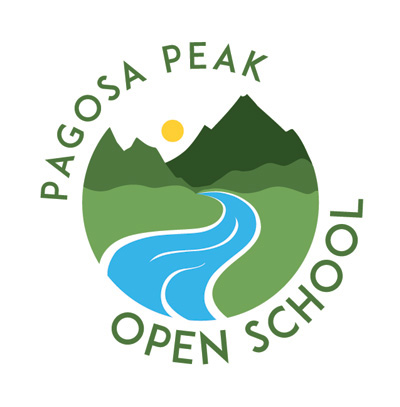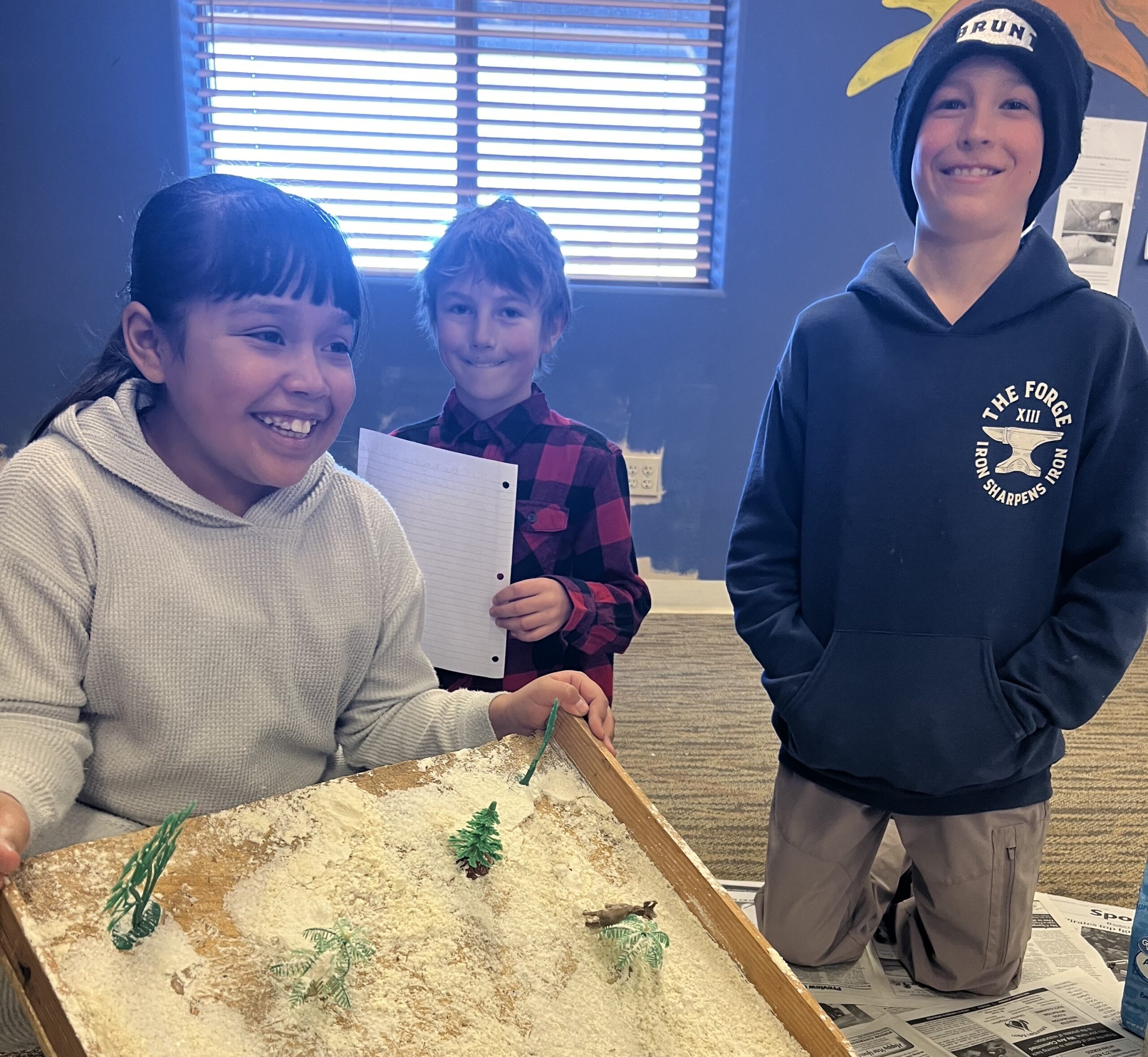Avalanches, mines, volcanoes: this is a San Juan Mountain Range story.
The narrators of this story are fourth-graders at Pagosa Peak Open School. Alongside their advisors Laura Hamilton and Kelle Bruno, these students got curious about the mountains that surround them.
“We look at these mountains every day and I wondered how many students and families know how they were formed, what they’re called, and how big the range is,” Mrs. Hamilton said about this class project. “I was curious – do we know what it is that we’re looking at?”
Through their project, students researched the human uses, recreational opportunities, hazards, species, and geological histories of this range. On Friday, March 1 they shared this newfound knowledge with a group of 40 adults and their peers. The space filled with mountain models, maps, papers, experiments, artwork, skits and oral presentations. Every student was represented and presented.
“The San Juan Mountains are formed by and are still left over by volcanoes,” fourth-grader Esparanza said. “I thought it was interesting that during the formation of these mountains, diamonds and gold were made.”
Other students were also surprised and interested to learn that these mountains close by were once active volcanoes.
“What really surprised me was that we’re home to the biggest volcano in the world – La Garita – it erupted last 23 million years ago,” fourth-grader William added.
Geological discussions lead the class into the history of mining, where advisors saw a change in the students’ interest. From science to social studies standards, students switched their focus.
“A lot of energy went into concepts surrounding human connection,” Mrs. Hamilton said. “The students wanted to know more about what Coloradans and miners went through in the past. There was curiosity about inequality, how the mining companies treated and employed their workers.”
Fourth-grader Darla jumped in.
“Mining can kill you,” she said. “There is gas and dust particles that can stop you from breathing and you start coughing and can die.”
Cambria continued the story.
“I learned that the way mining companies worked was that the people would be paid and the company would get the money back when the miners spent their money at a store that the company owned,” Cambria said.
Students also studied the importance of relationships in regards to safety in the San Juans, referencing the need for friends when recreating in the backcountry.
“You need to have friends because an avalanche could bury you,” Maleko said. “With friends you might be saved.”
Sedona added her knowledge around avalanche education.
“There is a higher risk of avalanche if there are three layers to the snow: a large, clumpy layer, a smaller clumpy layer, and then a powdery top layer,” she said.
This science project built upon the students’ previous project, when they studied Colorado history. Together the students have a full picture of the land that surrounds them and they call home.
Pagosa Peak Open School is a K-8 district charter school focused on implementing a project-based learning (PBL) curriculum in a Restorative Practices environment. Authentic audiences and settings where students share their learning is foundational to project-based learning.

